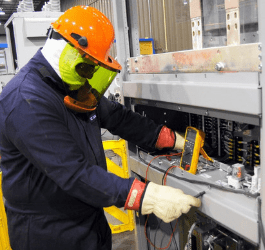Businesses today, across a broad spectrum of industries, are looking to deploy integrated and cost effective automation solutions from the plant floor to the wider enterprise. As well as for control, this is driven by the need to access plant floor process and equipment for remote process status and diagnosis, asset management, increased quality control and to improve overall operational efficiency. Added to this is the need to provide clear migration paths from legacy installed systems, while at the same time ensuring future proof architectures that enable the broadest selection of best-in-class products with easy interoperability to solve demanding control applications. And most importantly, not be restricted to a proprietary or vendor-specific solutions.
Technology Explosion
The explosion of the Internet and the development of Internet Protocol (IP) based services in our daily lives (smart phones, tablets, PC, WiFi, etc.), as well as the arrival of a new generation of engineers and decision makers familiar and comfortable with these high-tech and, today, user-friendly solutions, has resulted in a growing acceptance and expectation that these new technologies will be applied to enhance and improve industrial and process applications along with the business supporting services.
As a result, the combination of open Ethernet technologies and associated Web Services along with other open industry standards for software and device integration, such as FDT/DTM, is changing the face of today’s industrial and process control worlds.
No more proprietary technologies
In the not too distant past (and in many cases still the norm today), the way to integrate control equipment to supervision and enterprise systems would involve a combination of multiple proprietary technologies. Control, I/O, “intelligent” device and instrumentation networks would exist separately and utilise different cabling and protocol technologies. Discrete sensor and actuator connectivity still relied extensively on hard wiring with all the associated cabling and installation costs. To read data from these low level devices required the data to be “transformed” at each layer, bits to bytes, bytes to data and then data to information. This traditional approach ends up putting a heavy burden on the Automation Controller and associated SCADA applications and does not provide any “transparency” through the layers of the automation pyramid.
Collaborate on open technologies
Simple, open technology standards are the best way to foster the emergence of new, more effective applications. Collaboration with international standards organisations, such as the IEC, ISO and IEEE plus groups such as the Zigbee Alliance, FDT Group, OPC Foundation and ODVA are essential in order for this to happen.
The great advantage of using open standards, and in particular Ethernet based networks that utilise the Internet Protocol (IP) suite (not to be confused with Ethernet/IP, which we will discuss in a subsequent blog), is that they are essentially neutral to higher level protocols. This means they can be a part of a platform to connect diverse systems via the use of modern methods such as Service Oriented Architectures.
Leading the future
Today’s challenges require control systems that are not only easy to engineer and simple to maintain, but that deliver a clear picture about what is happening in the process, regardless of application. Control systems must be flexible enough to be tailored to meet the needs of all types of process including discrete, batch, continuous, safety or any combination and be capable of easily integrating with modern enterprise systems and third party devices.
Please share your thoughts on open architectures…


Conversation
I like that !
We are facing the same trends in the OEM (industrial machinery) market at different levels:
-Technology: PC-based control, Virtualization, Apps, Mobile devices, General Purpose OS,…
-IT/Automation convergence: integration of standard PC devices (camera, printers, RFID, biometrics,…), integration of off-the-shelf software (C/C++, Matlab, Simulink, CAD,…),…
-Customer behaviour: SW engineers are more and more becoming key decision makers within OEM Management organizations.
The only point where I still see a certain reluctance to the change from OEMs is on the fact that openness and standardization would impact more or less widely their know-how on which today they build their unique selling points. In fact accepting the change would imply for them to identify new ways to differentiate and innovate and eventually to reorganize their way of designing and engineering machines and making business overall.
On the other hands this creates a clear opportunity for us as long as we are able to provide open solutions which enable OEMs to customize them on specific “OEM application related” parts.
Hi Luca,
Thanks for your comment. I think the application of open technologies within automation does not mean that systems have to be “opened” up to all; a degree of intellectual protection can still be applied while adopting standard technologies. What it does mean is that machine builders should be able to differentiate and innovate their offers faster through the application of modern methods – for example QR-Codes for quick access to online documentation, spare parts ordering and maintenance schedules; or preventative maintenance alerts to the manufacturer before failure. I would actually argue that by not accepting open and standard technologies that a machine builder is very quickly going to find themselves travelling down an alley with a dead end – VHS / Beta Max anyone?
Thanks Eric…
Consider adopting XML for variable table, and open the format? So that 3rd Party software can share variable in the control system.
LiMing, nice to exchange with you. XML is actually at the heart of our automation offers and is at the heart of the Web Service technologies that supports the open exchange of data between different applications on different systems over an Internet connection. In 2005, we were the first automation company to embed SOAP/XML Web Service technology within our automation controllers. This approach allows other software tools direct access to the controller, thus simplifying architectures and eliminating middleware such as OPC (and even SCADA), where it is not otherwise required. XML can/is also used for the static import / export of variable data and the IEC61131/3 application.